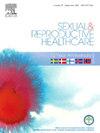Maternal positions in childbirth – A cohort study of labouring women’s movements and body positions the last 24 hours before birth
IF 1.7
3区 医学
Q3 PUBLIC, ENVIRONMENTAL & OCCUPATIONAL HEALTH
引用次数: 0
Abstract
Introduction
Maternal position plays an essential role in achieving labour progress as it supports the physiological mechanisms of labour. Evidence supports that adopting upright positions may facilitate physiological childbirth.
Aim
To describe the use of various positions among nulliparous pregnant women in the last 24 h before birth and describe physical positions in relation to maternal and neonatal outcomes at time of birth.
Methods
Cohort study of 105 nulliparous women with an uncomplicated singleton pregnancy. Body position was measured by two triaxial accelerometers (SENS motion®), and maternal and neonatal outcomes at time of birth were obtained from medical records. Positions were described for the total population and further stratified into two groups based on time spent in sacrum non-flexible (lying, sitting) and sacrum flexible (standing, walking) positions. Descriptive analyses of maternal position in relation to birth outcomes and comparisons between the two groups were made.
Results
Lying down was the most frequent position adapted, with a median time of 659 (78;1208) minutes, equivalent to 11.0 hours. Women spent 1152 (687;1369) minutes in sacrum non-flexible positions, equivalent to 19.2 hours or 80 % of the last 24 hours before childbirth. More than 90 % gave birth in a sacrum non-flexible position. Women spending more time in sacrum non-flexible positions had more epidural analgesia than women spending more time in sacrum flexible positions (42.6 % and 21.3 %, p = 0.03).
Conclusions
Women spent 80% of their time in sacrum non-flexible positions during the last 24 hours before childbirth. At birth, more than 90% gave birth in sacrum non-flexible positions.
分娩时产妇的体位-对分娩前24小时产妇的运动和体位的队列研究。
产妇体位在分娩过程中起着至关重要的作用,因为它支持分娩的生理机制。有证据表明,采用直立体位可能有利于生理性分娩。目的:描述未产孕妇在出生前最后24小时内使用各种体位的情况,并描述与分娩时孕产妇和新生儿结局有关的身体体位。方法:对105例无并发症单胎妊娠的未生育妇女进行队列研究。通过两个三轴加速度计(SENS motion®)测量体位,并从医疗记录中获取分娩时的产妇和新生儿结局。对全体人群的体位进行了描述,并根据骶骨不灵活(躺着、坐着)和骶骨灵活(站着、走着)体位的时间进一步分为两组。对产妇体位与分娩结果的关系进行描述性分析,并对两组进行比较。结果:平躺是最常适应的体位,平均时间为659(78;1208)分钟,相当于11.0小时。女性在骶骨不灵活的姿势上花费了1152分钟(687分钟;1369分钟),相当于19.2小时或产前最后24小时的80%。超过90%的孕妇在骶骨不灵活的位置分娩。骶骨非柔性体位时间较长的女性比骶骨柔性体位时间较长的女性有更多的硬膜外镇痛(42.6%和21.3%,p = 0.03)。结论:在分娩前24小时内,女性有80%的时间处于骶骨不灵活的位置。在分娩时,超过90%的人在骶骨不灵活的位置分娩。
本文章由计算机程序翻译,如有差异,请以英文原文为准。
求助全文
约1分钟内获得全文
求助全文
来源期刊

Sexual & Reproductive Healthcare
PUBLIC, ENVIRONMENTAL & OCCUPATIONAL HEALTH-
CiteScore
2.70
自引率
5.60%
发文量
73
审稿时长
45 days
 求助内容:
求助内容: 应助结果提醒方式:
应助结果提醒方式:


